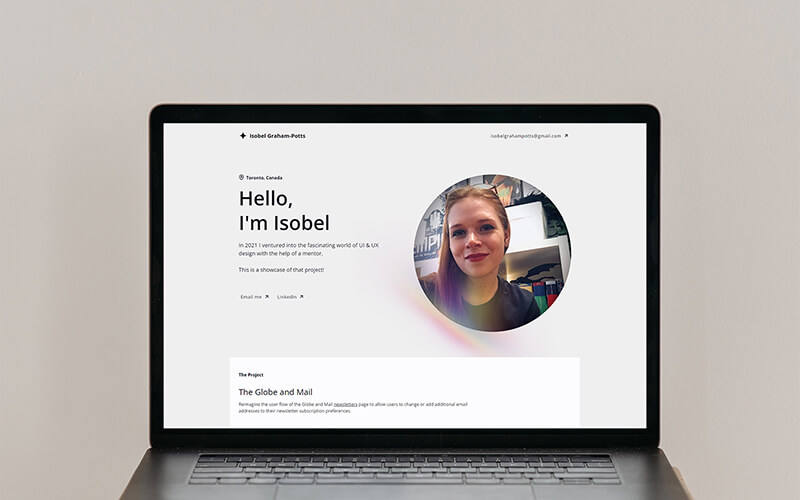I create beautiful websites and engaging advertising campaigns.
I manage the design, creation and deployment of digital advertising units, graphical assets, newsletters and websites for a portfolio of clients spanning the world’s leading brands.
Currently I work as a web designer for the Globe and Mail’s internal advertising agency. There I combine best practices in user interface design with IAB standards and data insights to create first class online experiences.
I'm a dedicated team player who teems with enthusiasm and it's my delight to have been nominated by my colleagues for multiple company awards.
Read my CV
Newly created and currently awaiting client approval. The client previously built their own website using the WIX platform but has noticed poor conversions and is looking for a full website redesign to attract more customers. They have given me freedom to explore new CMS and branding options to achieve this.
I began by conducting a stakeholder interview in which I identified the client’s pain points, business objectives and user base. Combining this information into an audience analysis, I used these findings to inform a complete rebuild of the site, featuring edited content, new branding and a revised look and feel.

In 2021 I used the Globe and Mail’s internal mentorship program to further develop my user interface (UI) design toolkit. Guided by a colleague on the Globe's UI & UX team, we agreed to embark on a year long project tackling a real UI issue encountered by users of the Globe and Mail website with set deliverables and goal posts to be achieved throughout the year, concluding in a detailed write up in the form of this website.
The mentorship introduced a plethora of new skills and experiences into my skillset, including software, critical thinking and user interface development.

Created in 2017 for Visualize Technologies, this website was created over a three-month sprint. Beginning as hand drawn user interface and page layout drafts, the design was developed into high fidelity photoshop mock-ups that identified typography, iconography, branding and core functionality. The development of the website was then taken into the Webflow CMS.
Having completed the primary webpage templates, navigation, responsive behavior and styling I was then able to hand the prototype over to the writing team for content development and implementation.

Created in 2015 for Exertis, this microsite was primarily intended to serve as a hub for downloading product manuals for the Linx tablet range. The scope of the website was extended during development to include an overview of the product, a carousel of official Linx accessories and a small section exploring the benefits of windows 10 operating system, which was a huge selling point for the tablet range at the time.
The website was created using a combination of HTML, CSS, JQuery and the bootstrap 3 framework and was my first commercial microsite build.
I create best in class responsive advertising units with functionality ranging from video and carousel integration to shoppable experiences and bespoke in-unit games. The below samples have been created using the Celtra and Flexitive advertising platforms.
Over the last few years I've been exploring the fascinating world of UI & UX design. Early on I decided to get to grips with a the design tool, Figma. As my first experiment I mapped the user flow of setting up a host property on Airbnb. Walking through the process each step at a time allowed me to analyze its strengths and weaknesses, design inconsistencies and evaluate the various pros and cons of each design decision. I then transferred my findings into Figma for layout and presentation.
My greatest learning from this project was that the needs of the business and the needs of the user were not one and the same, and how delicate balancing the two can be.
See it in FigmaWeb design trends and technologies are always changing and evolving which can make it difficult to keep an up to date skill set. Since I completed my masters degree in Web Design and Content Planning in 2016 I’ve seen the rise and fall of Flat Design, the fleeting trend of the Lobster font and the implementation of the game-changing CSS Flexbox. To keep up-to-date, I like to dip into the blogs and books of other designers and developers.



I'm just an email away and when I'm not tinkering with websites, lurking on Reddit or playing computer games, you'll find me doodling in my trusty sketch book.
